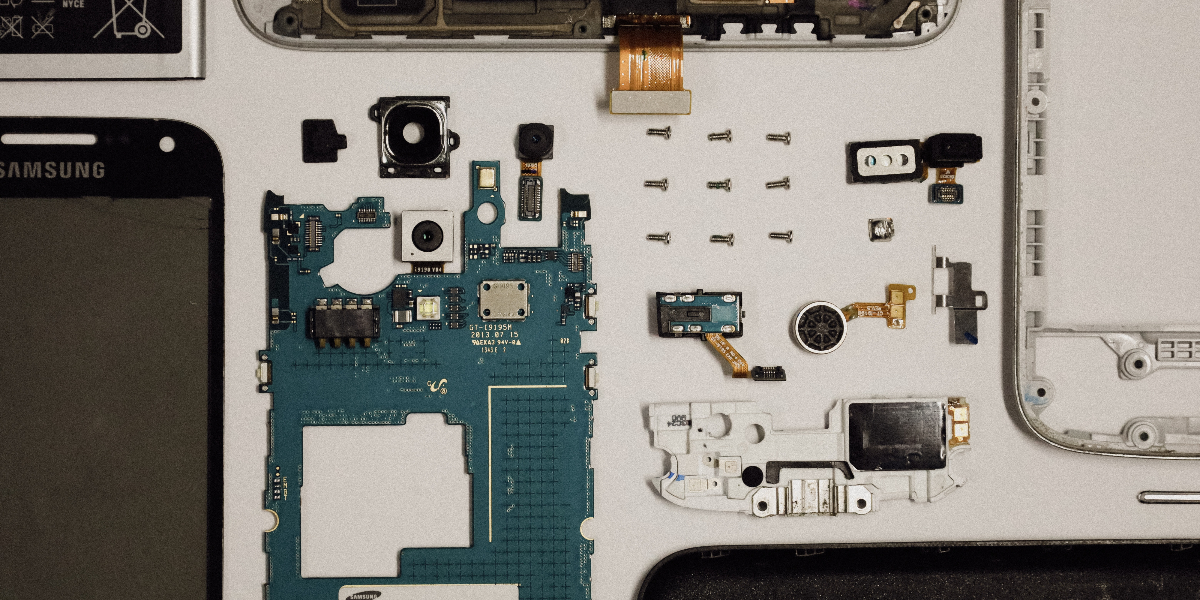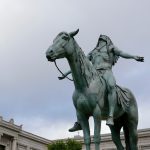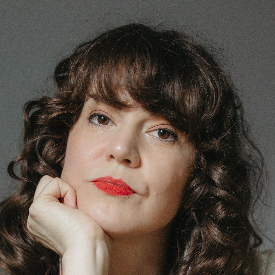Roma Agrawal is an award-winning structural engineer. She has designed bridges, skyscrapers, and sculptures and worked on London’s The Shard, the tallest building in Western Europe. She has lectured widely and has presented TV and radio shows for the BBC and Discovery.
Below, Roma shares 5 key insights from her new book, Nuts and Bolts: Seven Small Inventions That Changed the World in a Big Way. Listen to the audio version—read by Roma herself—in the Next Big Idea App.

1. Americans in the 16th and 17th centuries used to burn their houses down.
When Britain colonized the U.S., iron and steel were expensive. Both were hard to come by, meaning that forging nails—a very manual process—was also hard to come by. We didn’t have the machines to create them, so they were expensive and precious. The British colonizers didn’t want to send their precious nails to their subjugated Americans, which meant that there was a shortage of nails in the U.S.
Many of the homes in the U.S. were built from wood, which was an abundant natural resource. But because the nails were so expensive, they would burn their house down upon relocation or moving somewhere else. They would then collect all these precious nails from the smoldering ashes and carry them to their next location. It got so bad that in the 1600s, the State of Virginia had to pass a law that banned people from burning their houses down.
2. My daughter wouldn’t exist without the lens.
Lenses are curved pieces of glass or other transparent materials that allow you to bend light. Lenses have given humans superpowers. I wear glasses, so just being able to see on a daily basis is something I’m very grateful for. Lenses have also allowed us to use microscopes to look at tiny things, to discover the world of bacteria, blood cells, and so on. It’s also allowed us to look at massive, faraway things like our solar system, other planets, galaxies, and wider universe.
The reason that my daughter wouldn’t exist without this amazing invention is because she is an IVF baby. What that required was for somebody to extract an egg from my body and extract sperm from my husband’s body. Then, under a microscope, somebody injected a single sperm into my egg, which turned into an embryo. That embryo was then transplanted back into my womb and allowed a chance to become a child. That’s how I got pregnant. I wouldn’t have been able to have biological children without the invention of the lens.
“Socially, photography has had a huge impact on society.”
Lenses for photography are also incredibly important. Photography didn’t originally use lenses but rather pinhole cameras. But it meant that the images that we could capture were limited in their scope. The lens has allowed us to capture small and far-away images. They have allowed us to zoom in and look at features. Socially, photography has had a huge impact on society; it’s allowed us to understand and see cultures, animals, and food from all around the world. It’s even had a political impact. Frederick Douglass, the most photographed American of his time, used his images to humanize Black people in the U.S. during his abolitionist campaign.
3. There are hidden figures behind the work of people from marginalized backgrounds or communities who haven’t achieved the fame, money, or recognition that they deserve.
Engineering has historically been a very male-dominated industry. Similarly, the patent system and so on have been very dominated by the West. This means that we have lost a lot of engineering stories out there. One of those stories is about a woman named Josephine Cochrane. Cochrane invented the first automatic dishwasher and was able to obtain a patent even though there were many social barriers around her.
Another story includes Miriam Menkin, the woman who did much of the research and experiments that allowed her bosses, who were men, to fertilize and create the process of an embryo. She was, in fact, the first person to fertilize an embryo outside the human body.
Mary Hopkinson was the lab technician whose work facilitated the invention of the heart-lung bypass machine, which revolutionized heart surgery.
There are also many people outside of the Global North, like Jagadish Chandra Bose. Chandra Bose was an Indian scientist, engineer, and researcher. He worked on transmitting radio waves, which are a type of electromagnetic wave. He invented a device called a coherer, which was responsible for receiving and interpreting electromagnetic waves. He didn’t believe in patenting his work, but the radio would not currently exist without him.
There is also Kenjiro Takayanagi, a Japanese engineer who invented the first all-electric television. He also did not patent his work and records of his invention were destroyed during the second World War. It’s really incredibly important that we broaden out our understanding of where engineering and science come from.
4. Colonialism and engineering are linked.
The telegraph system has electromagnetism as the basis of engineering behind it. By changing electrical currents, you can create signals that magnets are used to interpret. Historically, telegraphs allowed the British in India to send messages over really, really long distances.
“The system, unfortunately, was set up for oppression.”
A Scottish doctor called William O’Shaughnessy set up the telegraph system in India across quite a vast swath of the country, despite the geographical topographical challenges. The system, unfortunately, was set up for oppression. It wasn’t set up to serve the Indian people; it was set up to serve the British rulers and the British troops. At the time, there were parts of India that didn’t even have a telegraph system because the British felt that those were not areas of high risk for rebellion.
5. Until recently, all breast pumps were engineered by men.
I found breastfeeding my daughter an excruciating and awful experience. Luckily though, the engineering behind the breast pump really helped me. By using the breast pump, I could extract my child’s next meal at a time that was convenient to me, so I wasn’t continuously tied down by her lack of schedule. It also meant that my husband could pick up some of the feeds, especially during the night. What’s interesting though is that breast pumps have never been designed by women or by people that would use this technology. They were inspired by machines used to milk cows. Thus, it was unsurprising that I felt like a cow while attached to these machines that were pumping milk out of me.
Through the ages, various different contraptions were created, most of which had a bulb that you attached to the breast and that you sucked from in order to get the milk out. These were not efficient pieces of engineering. As time went on coming into the 20th century, engineers did start to get a bit more involved in the design of these pumps. Unfortunately, most of the first electric breast pumps were large and cumbersome, so they were only used by women in hospitals in emergency cases.
The first electric breast pumps used in the home were only really created in the 1990s, which isn’t that long ago. The first records of women-designed breast pumps are only found in the last few years. That’s the first time somebody actually asked, “What does a mother or a breastfeeding parent actually want from a breast pump?” We don’t want to feel like a cow. We don’t want to be hooked up to a wall hiding in some backroom in the office. We want the pump to be silent and not make the awful noise that most of the current ones make. We want it to be efficient. We want them to be discreet.
Finally, the first pumps that actually fit inside your bra were created, which are silent. They use a special type of pump called a piezoelectric pump. With these pumps, you can go about your daily business while pumping for your child.
To listen to the audio version read by author Roma Agrawal, download the Next Big Idea App today:





























